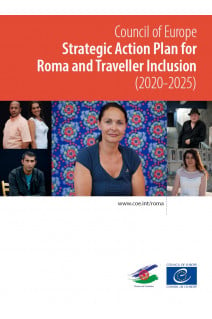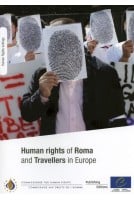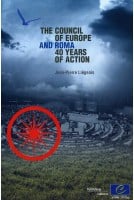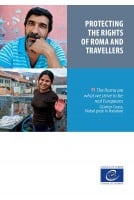Combating anti-Gypsyism and discrimination, supporting equality, and fostering democratic participation, promoting public trust and accountability, and supporting access to inclusive quality education and training: these are the aims of this Strategic Action Plan on Roma and Traveller Inclusion (2020-2025)
Many of the 10-12 million Roma and Travellers in Europe suffer from extreme poverty and exclusion. The existence of widespread anti-Gypsyism reinforces and aggravates their economic and social deprivation.
This Strategic Action Plan on Roma and Traveller Inclusion (2020-2025) translates the strategic objectives of the Council of Europe regarding the protection and promotion of human rights, democracy and the rule of law into a policy framework for the social and intercultural inclusion of Roma and Travellers in Europe. It provides a framework that is flexible and adaptable to country-specific conditions, serving as a roadmap and practical tool for the design, implementation and adjustment of programmes and actions.
The objectives of the Strategic Action Plan are to promote and protect the human rights of Roma and Travellers, to combat anti-Gypsyism and discrimination, and to foster inclusion in society.
The Strategic Action Plan is structured around three main lines of action:
• combating anti-Gypsyism and discrimination and supporting real and effective equality;
• supporting democratic participation and promoting public trust and accountability; and
• supporting access to inclusive quality education and training.
1. CONTEXT 2. IMPLEMENTATION OF THE THEMATIC ACTION PLAN ON THE INCLUSION OF ROMA AND TRAVELLERS (2016-2019) 3. STRATEGIC ACTION PLAN FOR ROMA AND TRAVELLER INCLUSION (2020-2025) 4. FUNDAMENTAL PRINCIPLES GOVERNING THE STRATEGIC ACTION PLAN 5. PRIORITY AREAS AND MAIN LINES OF ACTION FOR 2020-2025
5.1. Combat anti-Gypsyism and discrimination and support real and effective equality
5.2. Support democratic participation and promote public trust and accountability
5.3. Support access to inclusive quality education and training
6. CROSS-CUTTING ISSUES 7. IMPLEMENTATION AND FOLLOW-UP OF THE STRATEGIC ACTION PLAN









